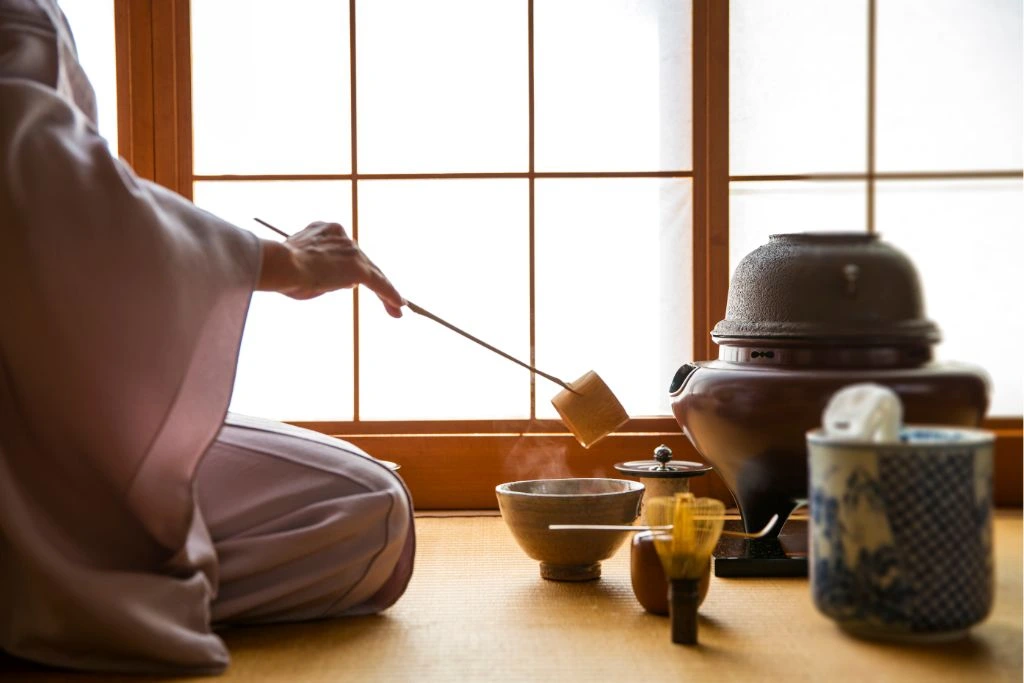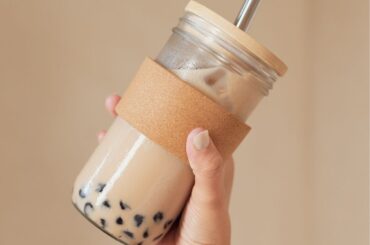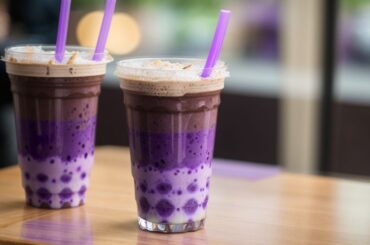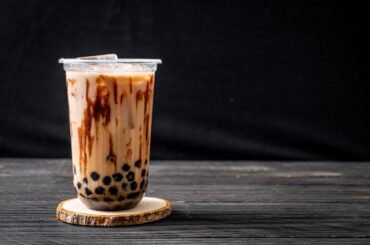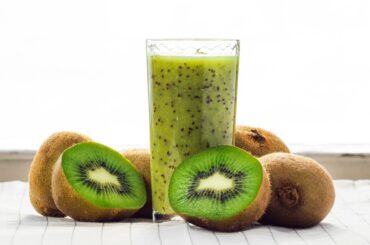Milk teas can be any tea-based drink made with various ingredients. These ingredients often vary from one country to another. In some countries, the ingredients and preparation can vary from one province to another.
Japan is widely known for having a solid tea culture. Drinking tea is more than just a hot trend. It deserves its ceremony. In Japan, tea ceremonies are pretty common, and they hold a lot of meaning, including respect, purity, tranquility, and harmony.
You can trace the history of tea ceremonies in Japan to the 9th century when Eichu, a Buddhist monk, made and served sencha to the then Emperor Saga.
Tea drinking has evolved along with the changing preference of consumers. Hokkaido milk tea is one of the more popular tea flavors that have become widely associated with Japan.
If you’re looking for a refreshing Hokkaido milk tea recipe, you’ve come to the right place. We’ll briefly introduce Hokkaido bubble tea, its benefits, the best ingredients to use, and how to make this Hokkaido pearl milk tea at home.
What Is Hokkaido Milk Tea?
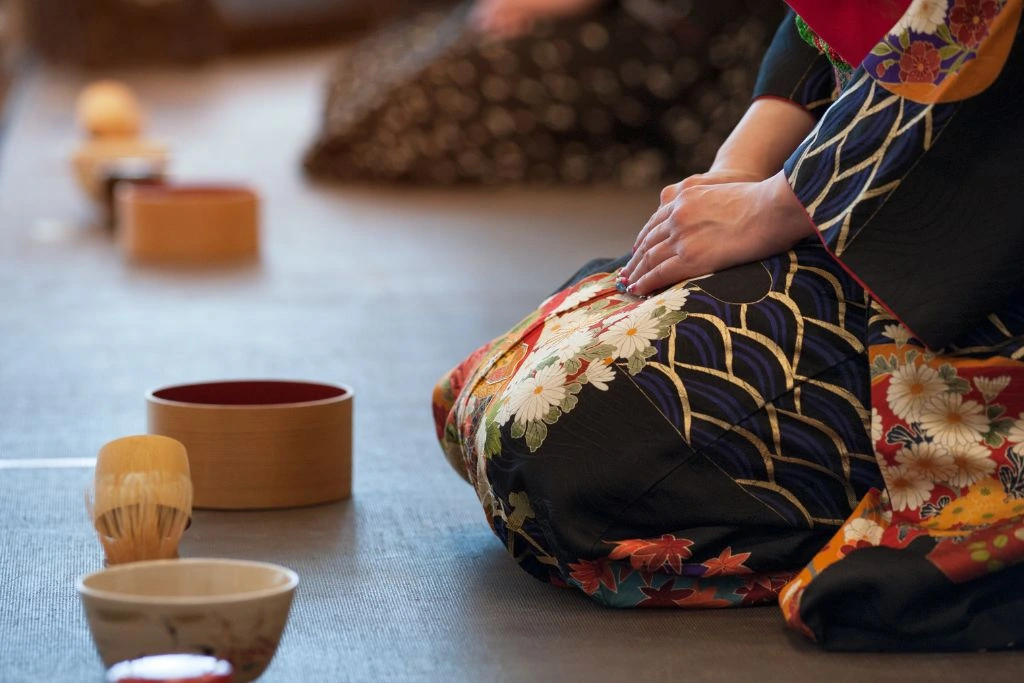
What is so special about Hokkaido milk and why is it the preferred milk by most to make milk tea?
Hokkaido is the second largest island in Japan and is famous for its wide agricultural expanse and aquatic resources. Hokkaido produces almost 50% of the milk in Japan, known as the Hokkaido milk. Hokkaido milk is famous for its signature mild vanilla flavor. Its flavor is smooth and creamy, with the richness of pure cow’s milk.
This is why Hokkaido milk, one of the main ingredients of Hokkaido milk tea, is famous throughout Japan and Asia. If you’re familiar with the milk tea culture in Japan, you will notice that most of their teas use green tea or matcha tea as the base. For the Hokkaido milk tea, however, the base is black tea to help highlight the Hokkaido milk.
What Does Hokkaido Milk Tea Taste Like?
If you haven’t tasted Hokkaido milk tea yet, you’re in for a surprise. This Japanese tea is known for its resemblance to vanilla, with its earthy and sweet flavor. The vanilla flavor is believed to have come from Hokkaido milk.
The taste will depend on what ingredients you include. Take note that some tea varieties will change their flavor profile. The same goes if you use a different sweetener. Adding texture with tapioca pearls will make this signature Japanese milk tea have a fruity vanilla taste.
Due to its richness in flavor, Hokkaido milk is used to make pastries, cheese, ice creams, and even beers.
Hokkaido Milk Tea Benefits
Aside from its satisfying taste, Hokkaido boba tea is widely consumed in Japan and worldwide for its many benefits. Here are some of them:
Strengthens Immunity
Antioxidants are chemicals that help fight free radicals. Free radicals are molecules that can cause damage to the body, especially if they enter through your skin or respiratory system. This is why you’re recommended to use sunscreen when you go out into the sun because it protects against these harmful substances. Antioxidants can also protect your body from these harmful substances by neutralizing them before they have time to damage cells or your DNA.
Antioxidants are found in many foods and drinks, such as fruits and vegetables. Milk tea also contains significant amounts of this beneficial substance, which helps fight disease by reducing inflammation caused by free radicals.
The milk may also improve immunity by helping to strengthen the immune system and fight off illness, along with the antioxidants from the tea.
Contains Less Sugar and Fat
Hokkaido milk tea contains less sugar than other types of tea because they use less condensed milk when making it. They still sweeten it enough for drinking without using sugar cubes or sugar packets, which can be bad for your health, anyway!
Hokkaido milk is believed to be of high quality since the milk comes from the region’s ideal farming conditions. The cool weather, fresh water, and wide open pastures allow the cows to live stress-free, resulting in better-tasting milk products.
Since the producers only do minimal processing, the milk is in its purest form. While this milk is available in different milk fat percentages, 3.6% fat is the most common variety.
Has Natural Stimulants to Boost Energy
Caffeine in black tea is a natural stimulant that helps give you energy. The combination of caffeine and sugar in milk gives you an instant boost of energy, so it’s perfect for when you need to wake up or feel alert after a long day.
The good thing about using tea as your stimulant is that it has a lower caffeine content than coffee, so it won’t cause any palpitations or jitteriness when you’ve had more than one cup. You can even tweak the caffeine level of your tea by steeping it less or by using more water when infusing the tea.
Good Source of Calcium
Hokkaido milk is a great source of calcium, which is essential for building and maintaining strong bones. The milk also contains vitamin D, which helps the body absorb calcium. Vitamin D plays an important role in muscle function and immunity, as well as blood pressure regulation.
Milk contains other nutrients that can help support your health. For example, Vitamin B12 helps maintain regular energy levels by supporting red blood cell production and helps metabolize food during digestion. It also supports mental health by producing myelin sheaths around nerve fibers to improve nerve function.
Milk is also said to be good for digestion and may protect against stomach ulcers caused by excess acid production in the stomach.
Calcium is one of the best nutrients for maintaining a healthy digestive system, as it helps with digestion and keeps your teeth strong. It can also reduce inflammation in the body, which helps prevent heart disease and stroke. Milk contains about 8 grams of protein per cup.
The benefits of drinking milk tea are numerous, and it is possible to enjoy this delicious drink in your own home. Make sure that the Hokkaido milk you use is low-fat and preferably organic, if possible. A high-fat content can lead to obesity, which may cause other health problems.
It’s important to take note that Hokkaido milk tea shouldn’t be used as a medicating drink and always be consumed in moderation. The sugar in the boba pearls can cause weight gain or even diabetes. It’s best to consult your medical doctor about how often you can consume Hokkaido milk tea.
Upon learning the many benefits of Hokkaido milk tea, you probably can’t wait to finally make one for you and your family. What are the ingredients of Hokkaido milk tea? Continue reading below!
Hokkaido Milk Tea Ingredients
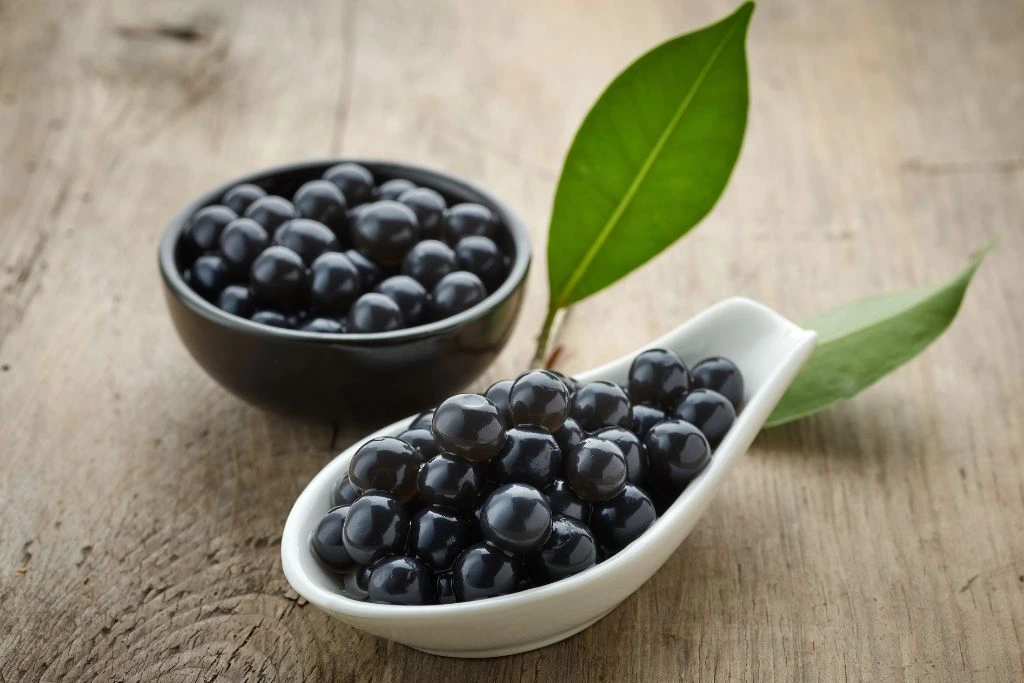
Yield: 2 cups
Preparation Time: 10 minutes
Cooking Time: 15 minutes
Here’s what you need:
- Black tea (2 teaspoons, heaping): The best tea base to use for Hokkaido bubble tea is black tea. Some of the options are the English Breakfast, Assam, or Irish Breakfast.
- Milk (2 cups): Get yourself Hokkaido milk. It will be a shame if you’re making Hokkaido milk tea without using the milk it was named after. They’re available in most Asian grocery stores or online. It’s best to use the whole milk version. You can combine the milk with cream to achieve a rich taste.
- Sweetener (to taste): You have several options of sweetener to use. You can use honey, brown sugar, or caramel. In traditional Hokkaido milk tea, the sweetener of choice is the sanonto, a popular brown sugar known for its light and delicate taste.
- Tapioca pearls (4 tablespoons): Hokkaido milk tea can be enjoyed plain, but it would have a burst of flavor if you add tapioca pearls to your concoction. Not only does it give it that extra kick of sweetness, but it also offers a surprise with every sip.
- Water (for steeping): The amount of water depends on how well-concentrated you want your tea. You should have eight ounces of water for every teaspoon of loose-leaf tea. If you prefer your tea to have more caffeine, you can use less water or steep it longer (but you run the risk of overstepping).
- Ice cubes: While Hokkaido milk tea is traditionally served hot, this recipe will feature the cold version.
How to Make Hokkaido Milk Tea
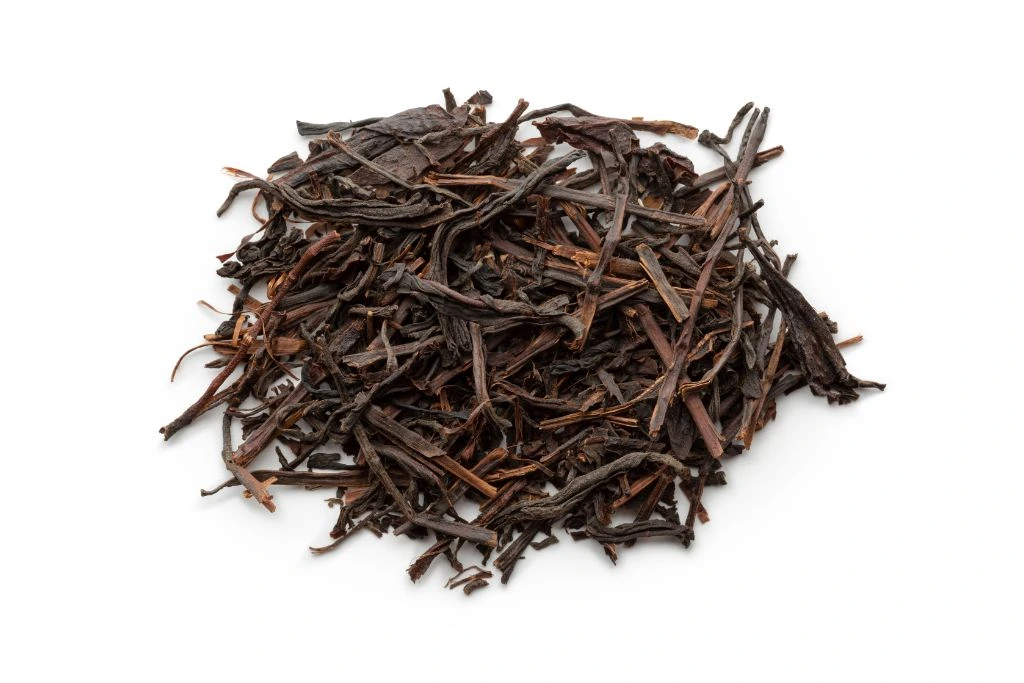
Here’s how to prepare your homemade Hokkaido bubble milk tea:
Measure the tea leaves for steeping
Prepare your black tea leaves. You can use a teapot or tea infuser in this step. This method will allow the leaves to expand more, allowing their full flavor to come out.
Once ready, heat your filtered water until it is on a rolling boil. Pour the hot water on the prepared loose tea leaves. Let it steep for three to five minutes.
Cook your tapioca pearls
While your tea is infusing, set it aside and start cooking the tapioca pearls. Bring water to a boil before adding the boba pearls. If you’re using pre-packaged and quick-cooking pearls, it should be done in five minutes. You’ll know once you see the pearls floating on the pot. Once cooked, drain and run over cold water. Set it aside to prepare the sweetener. Coat the cooked tapioca pearls with the sweetener.
Warm the milk
Warm the milk inside the microwave before pouring it on the infused tea. Slowly add the milk to the tea to prevent curdling. If you prefer, you can also froth your milk before adding it to the tea to create a tea latte.
Assemble the Hokkaido milk tea
Start with the boba pearls. Add two tablespoons to each glass, put in the ice cubes, and pour in the milk tea. Add the straw, serve, and enjoy!
FAQs
Why is milk in Japan so good?
Aside from the farming techniques and ideal dairy farming conditions, milk in Japan is good because of its pasteurization process.
Is raw milk legal in Japan?
No. Raw milk or unpasteurized milk is illegal in Japan, except for the Omoiyari Seinyu from Hokkaido. They are the only 100% raw milk, straight from the cow’s udders, sold commercially in the country.

